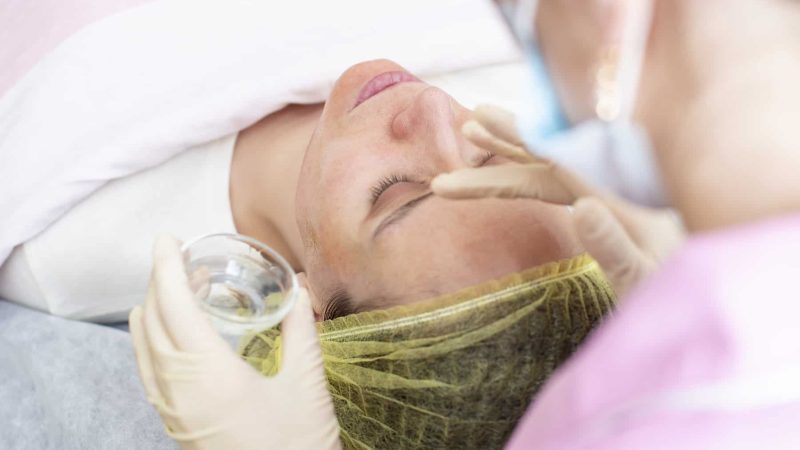Have you ever purchased a wart or corn remover, like Compound W, over the counter? When you apply the product onto the treatment area, the skin turns white after a few minutes.
Most of these over-the-counter products contain Salicylic Acid. A “frost” is common with Salicylic acid peels, Jessner’s solutions, and other treatments containing salicylic acid. The skin turns white or “frosts” as it neutralizes.
Frosting is a salt crystal residue on the surface of the skin and has nothing to do with what is occurring within the epidermis and dermis. It only pertains to what is being applied to the surface of the stratum corneum. As more of the peel solution is applied, the residue will appear more obvious.
Blanching is different than frosting. Blanching refers to protein coagulation or kerato- coagulant. This is a way to say burn! You are creating a controlled burn or wound to the skin. You may see some blanching occur, especially compromised skin around blemishes. The skin may go from varying shades of ashy gray to bright white, depending on the depth of the damage.
You will know the difference between frosting and blanching by simply wiping the residue away. If it disappears, it’s frosting or the salt precipitate left from the neutralization process. If it doesn’t immediately wipe off, it’s blanching.
The blanch will remain until the skin has normalized, which can take approximately 1 to 4 hours after the treatment. Consider the amount of blanching when recommending post-care instructions. The more blanching, the more downtime your client may experience.
Never take your eyes off your client’s face. If your eyes are on your client, you can quickly move to correct anything out of the ordinary.

